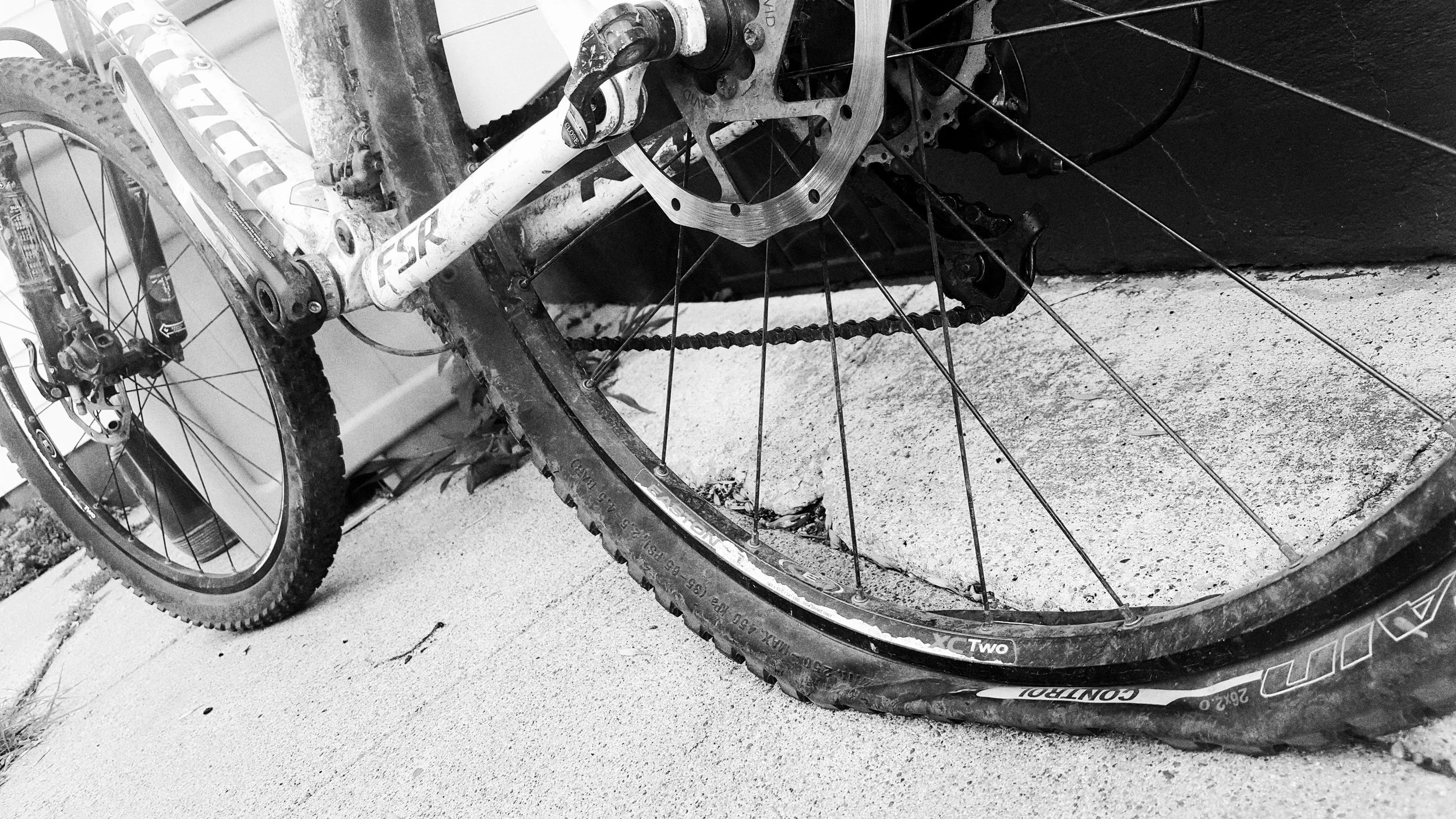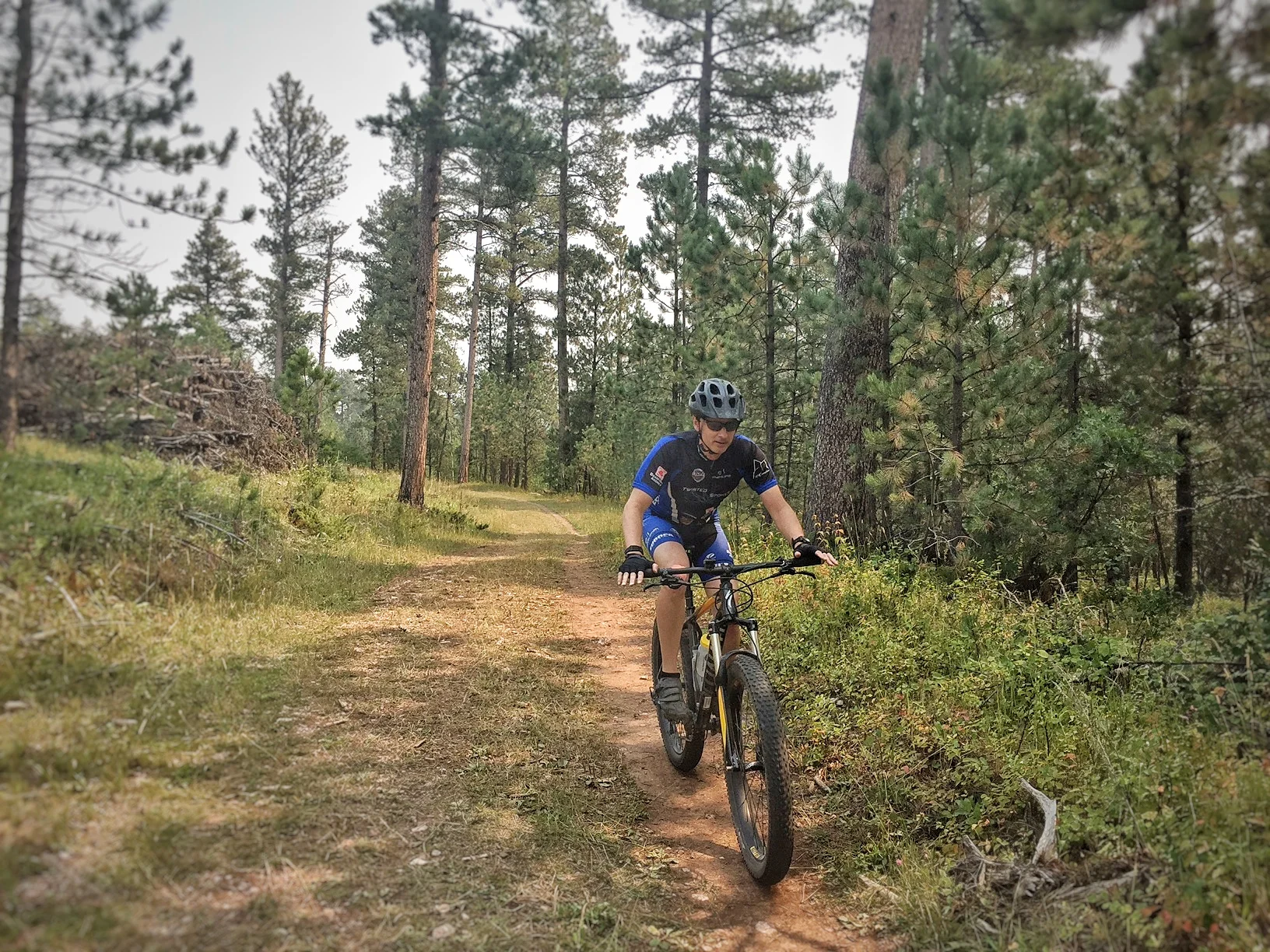steamroller
I had the new bicycle for less than a day, and I wondered if I had made a mistake.
My first ride as the owner of a Specialized Fuse was to coast the 9 blocks downhill to unlock the church on a Saturday morning and then pedal home again, uphill. “Jesus”, I said to my unseen companion, “this thing is like driving a truck.”
It’s a big bike - massive, actually, and heavy, too. It has a long wheelbase, big wheels, fat tires, wide handlebars. The front fork may have come from a Harley Davidson, and like a Harley, it’s noisy. You can hear me coming: the knobby tires buzz and whine on pavement. Noise is caused by friction and friction is what we call rolling resistance. On most rides you can count on a certain amount of coasting - periods when you don’t have to pedal - but not on this bike. To keep the huge hoops rolling I have to pedal all the time. When gravity or the wind work against me, I huff and I puff as I keep the cranks turning.
Before buying, I did a ton of reading - manufacturer’s claims and independent reviews. I test rode it for about 30 minutes earlier in the week and it felt great, but maybe that was because I had just parked my old mountain bike, a beat-up, creaky, 14-year-old thing that was practically non-functional. Anything would feel good after riding that.
My mountain bikes have always been “cross country” machines - designed for speed and efficiency and quick handling. But, as I’ve finally (almost) accepted that I’m not really a racer, and as I was reluctant to spend the six thousand dollars to replace the old bike with the new version of the same model, I decided to go with a “trail” bike that has a different philosophy of design, is mechanically much simpler, and costs a heck of a lot less.
A casual observer may look at a cross country bike and my new bike standing beside each other and wonder what I mean by “design philosophy”. But, the relative lengths of those different tubes and the angles at which they meet are what determine a bike’s “personality” and just a few millimeters and a couple of degrees make a big difference in how the machine behaves. The Fuse frame was designed to accommodate high-volume tires, which are incredibly heavy but offer enough cushion that I don’t need a complicated rear suspension system. The drivetrain has only ten gears, rather than the 27 of my old bike. Rather than being designed for raw speed, my new bike has stability and versatility and simplicity built into it.
About an hour after that first ride to the church and back, wondering what I’d gotten myself into, I took the new bike to a local off-road trail, strapped on my helmet, and within the first hundred yards, I knew this bike was a completely different animal on dirt than on pavement.
Riding on dirt didn’t make the bike feel any smaller or lighter, but now it was in the environment for which it was intended, and its assets were immediately clear. If the basic rules* of mountain biking are: eyes up, weight back, and momentum is your friend, then this bike is built to support those fundamentals. The wide handlebars open my chest for better breathing and keep me from hunching my shoulders when I get tired, so my head is up and eyes are looking ahead as they should. It’s easy to stand up on the pedals and that’s important on a hardtail because sometimes you have to get off the seat and let the bike work underneath you. The big back wheel is tucked as close under my butt as it can be and the front wheel is pushed forward for stability so the bike feels confident and planted. The rolling resistance that I feel on pavement becomes traction on dirt, and it’s amazing - the bike just sticks to the trail. The big wheels will roll over almost anything if I can just keep them turning. They should have named it the Steamroller.
So, the obvious drawback of this bike is the weight. The emotional high of having a new bike can’t mask how heavy it is. I can’t deny it and I can’t escape it. It’s a lot of work to ride this thing fast. But like the fat guy on the dance floor, it has some great moves, and it’s a ton of fun. When the trail is flat, or downhill it is an absolute joy to exploit the Fuse’s traction to carve turns, and its stability to simply ignore obstacles, and I find myself using my brakes a lot less than I used to. The stability and the traction make me want to ride hard. Heck, the Fuze makes me want to ride, period. This bike inspires confidence on the trail: rock garden? Ride through it. Tree branch down across the trail? Ride over it. Loose sand? What sand? I didn’t feel any sand.
Although I’m not really a racer, I am going to race on this thing: I’m registered for two big events later this summer. They’re the kinds of destination races that have the reputation of being difficult, and while some people do them to compete against other racers, many riders, like me, enter just to challenge themselves and to enjoy the “big event” atmosphere. For these races, I’ll have to learn to work with the bike - to exploit its assets and not fight its weaknesses. I’m simply not powerful enough to sprint this bike out of corners or attack the climbs. I’ll have to ride with patience, building speed when I can and then using the amazing traction to not slow so much for the corners.
Overall, I’m very happy with its capability, its stability, and the way it encourages me to ride aggressively on singletrack. While I still struggle with the idea that I didn’t buy a fast bike, I love how the Fuze fits with the new reality of who I am as a rider. Me and my new bike may not be the fastest rig out there, but we’re fully willing and able to tackle a new trail and a new challenge. Time will tell if the Fuze is an acceptable bike for me to race on, but I already know it’s a great vehicle for finding joy on the trail and that is what my riding is all about.
chris congdon
* Bonus 4th rule: don’t ride with your tongue between your teeth





